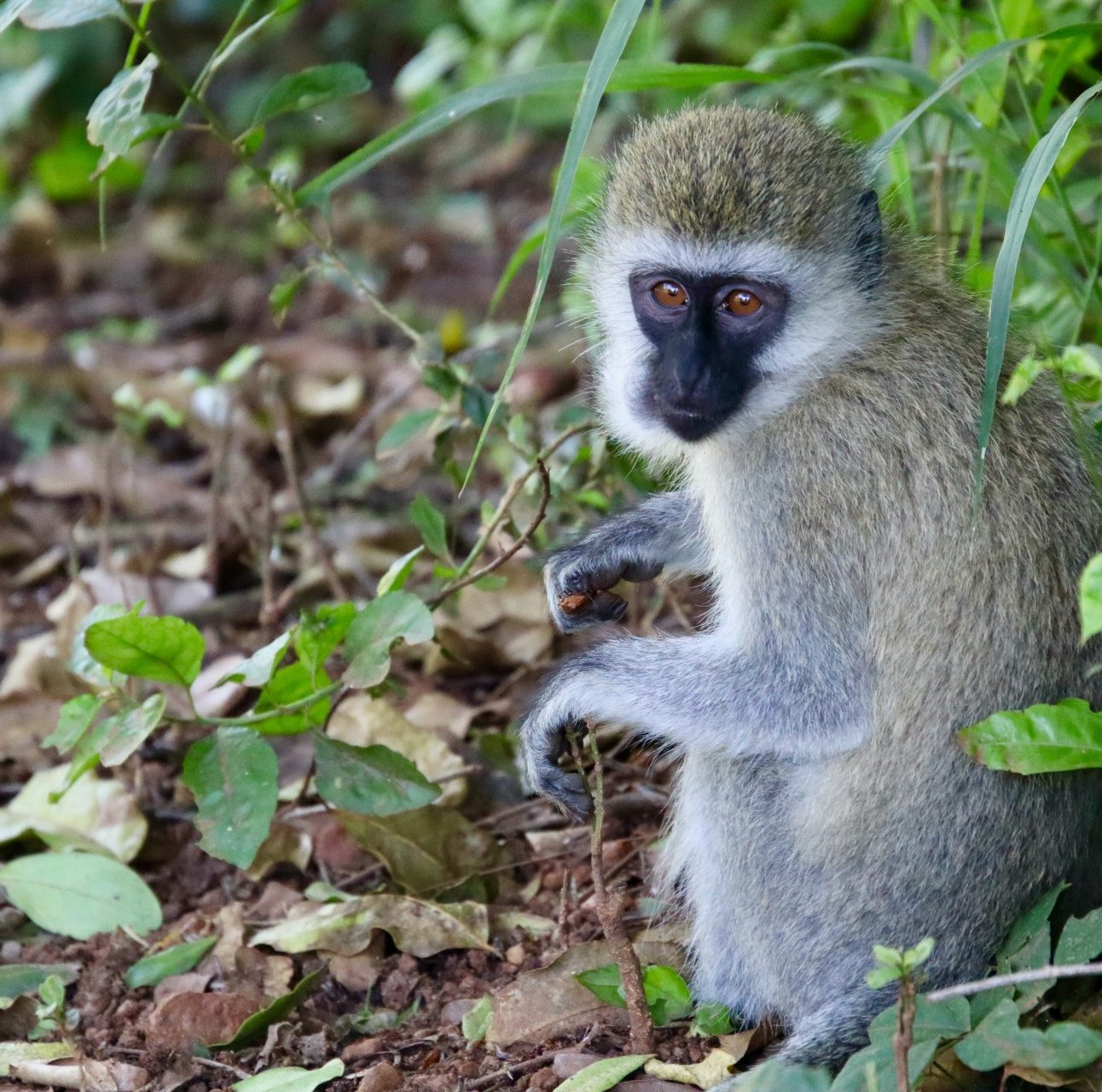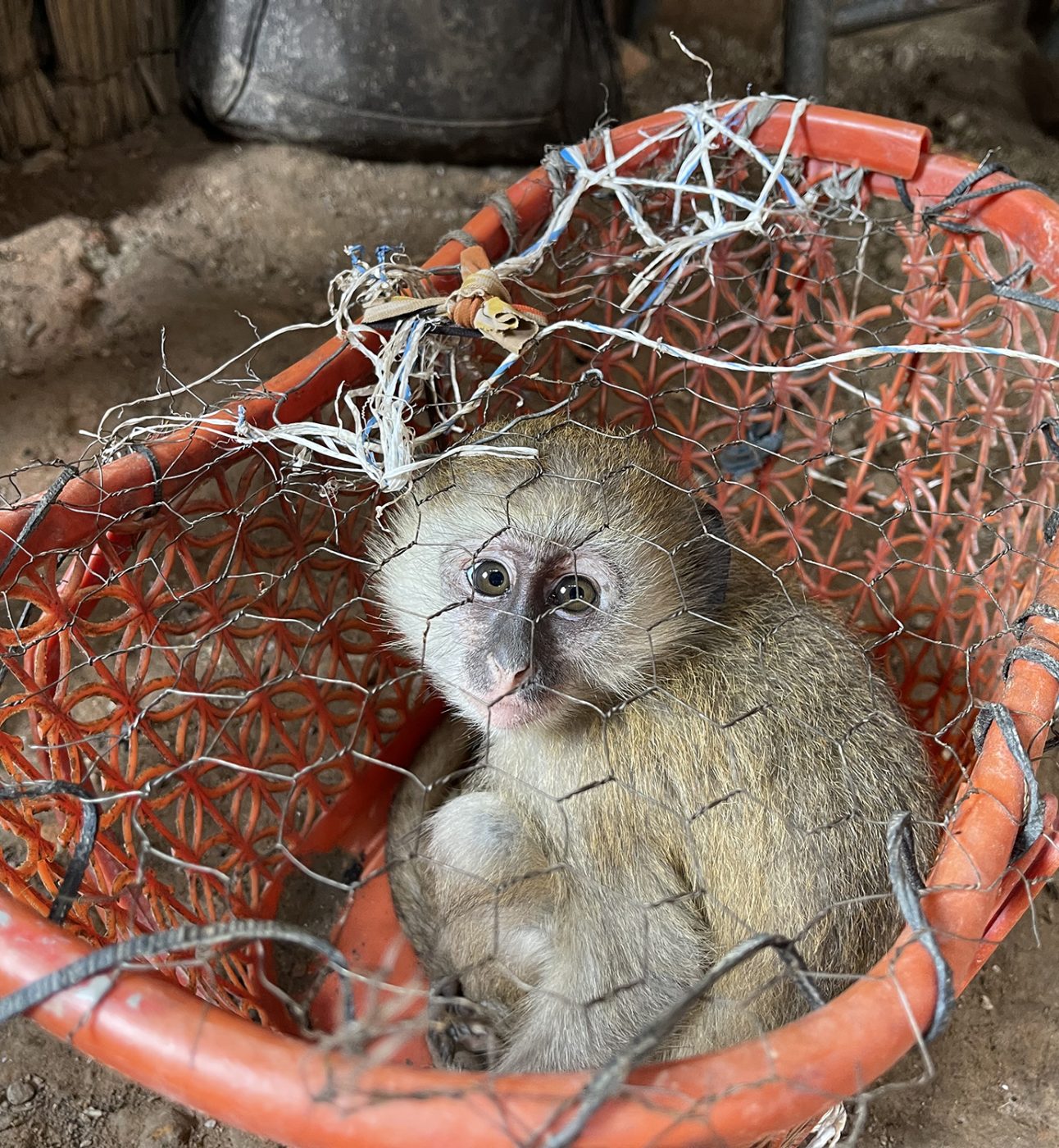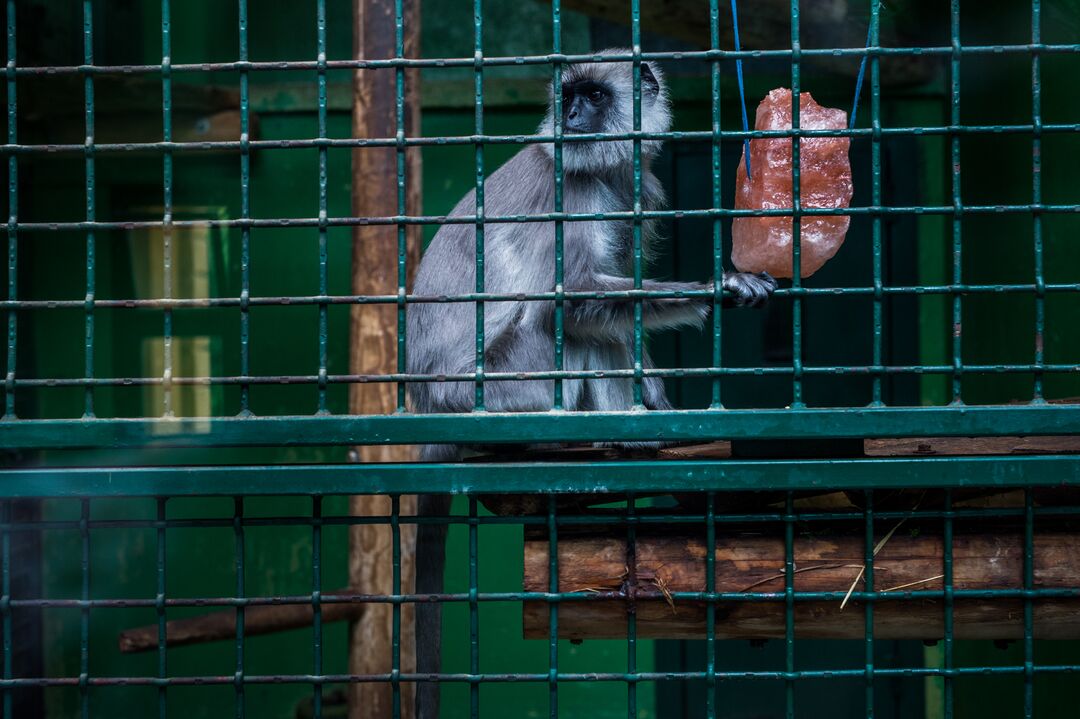
IUCN STATUS
Least Concern
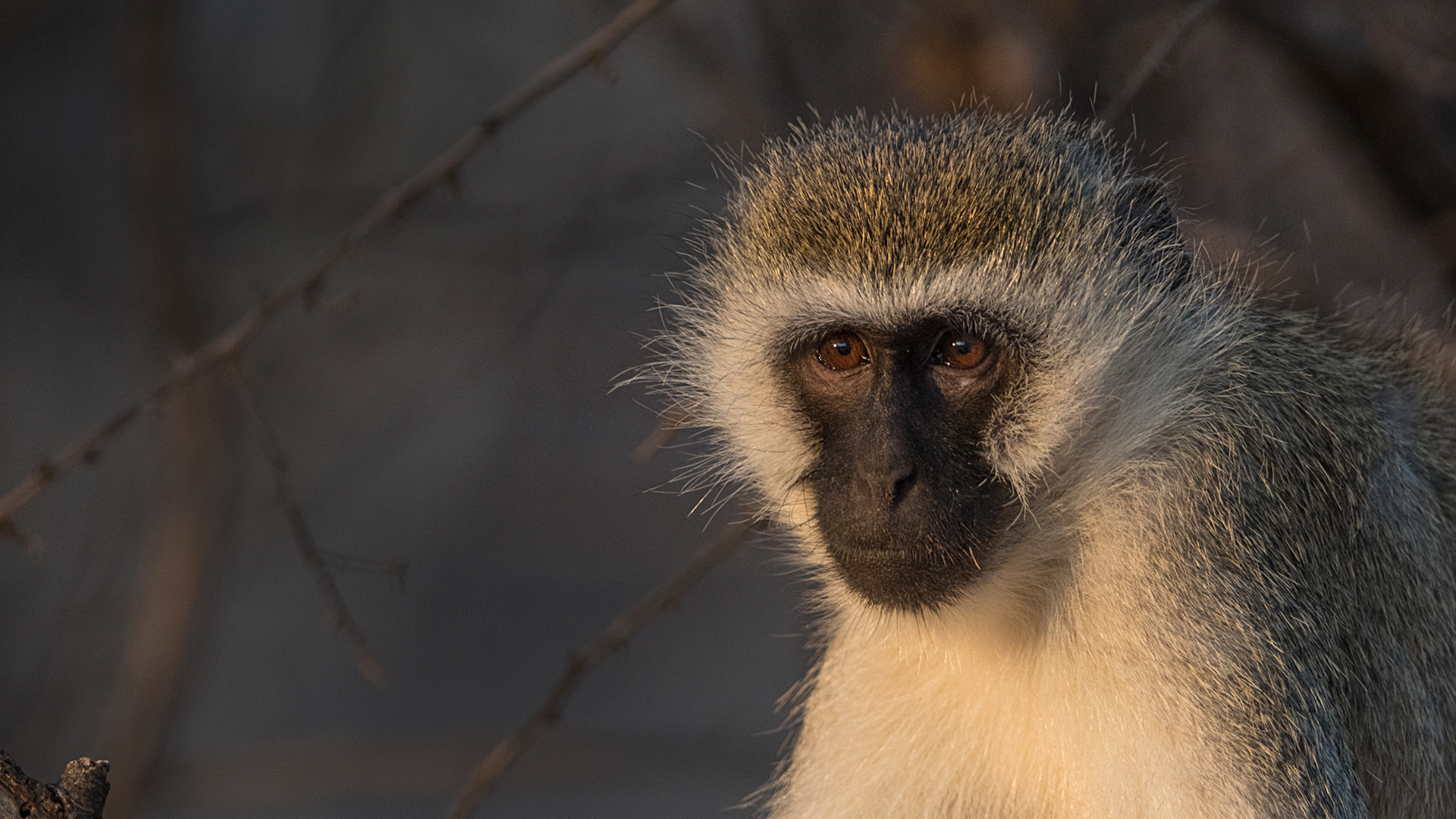
Chlorocebus pygerythrus
Vervets are an important source of prey for animals higher up the food chain, including leopards and snakes. They also hunt small animals such as insects and birds, helping to control these populations.

Least Concern

Unknown, decreasing. Last assessed 2016

Omnivorous

Open and acacia woodlands, humid rain forests, semi-desert environments and swamps

East and southern Africa

Weight: 3kg-5kg, length: 40-60cm (with a tail of 30-50cm long)

Human-wildlife conflict, bushmeat hunting and the illegal pet trade
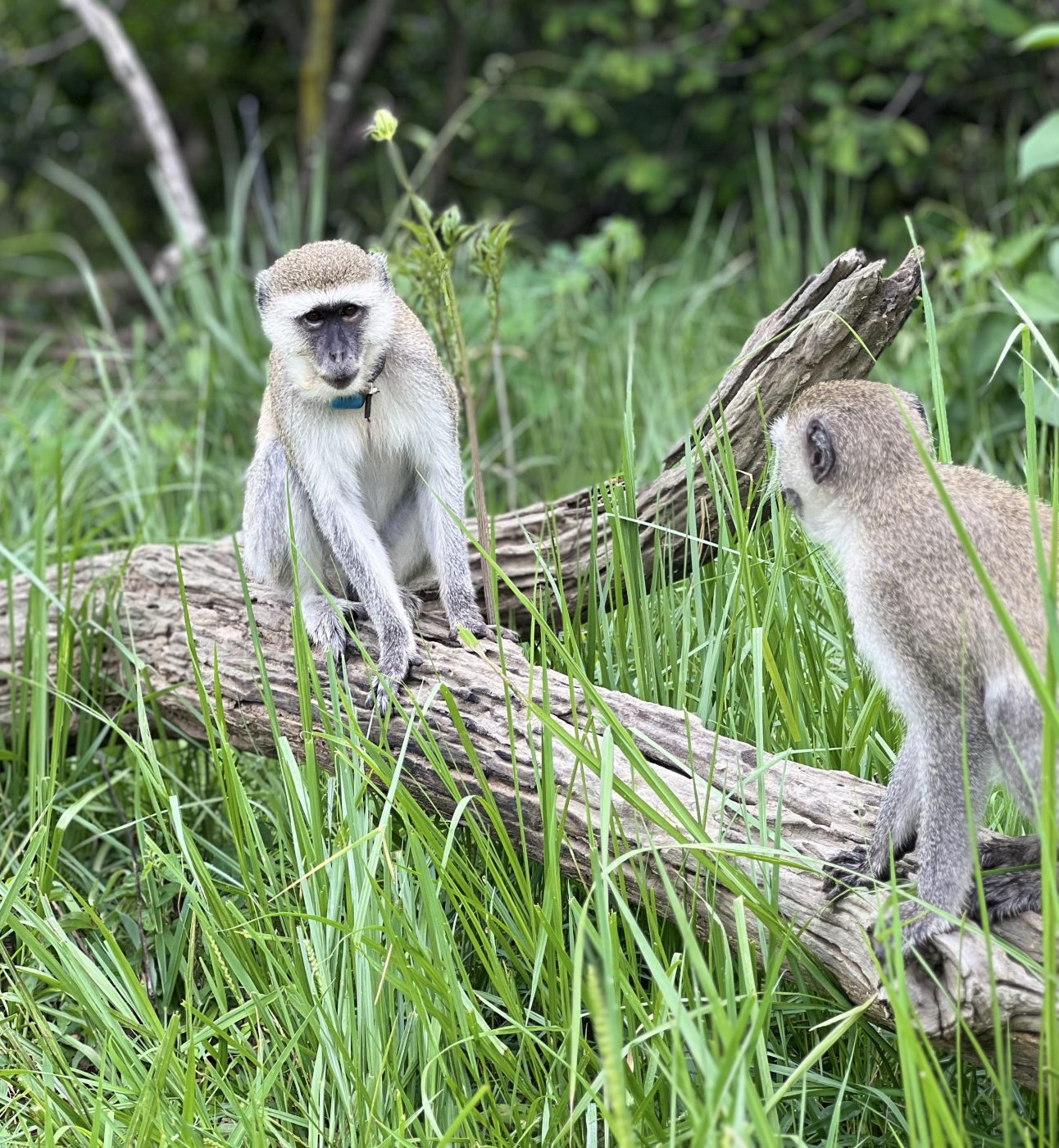
Vervet monkeys have a complex system of alarm calls which allow them to ‘talk’ to each other to warn of attack and how to escape.
The vervet is a medium-sized primate. They are semi-terrestrial monkeys, meaning they live on land and in the trees. They have a green-olive or silver-grey coat, black face, ears, hands and feet and long tails. Males have a blue scrotum and a red penis and are typically larger than the females.
Vervets live in savannah, open woodland, forests and grasslands in eastern and southern Africa. They are adaptable and able to live in areas which are fragmented with agriculture or urban build-up.
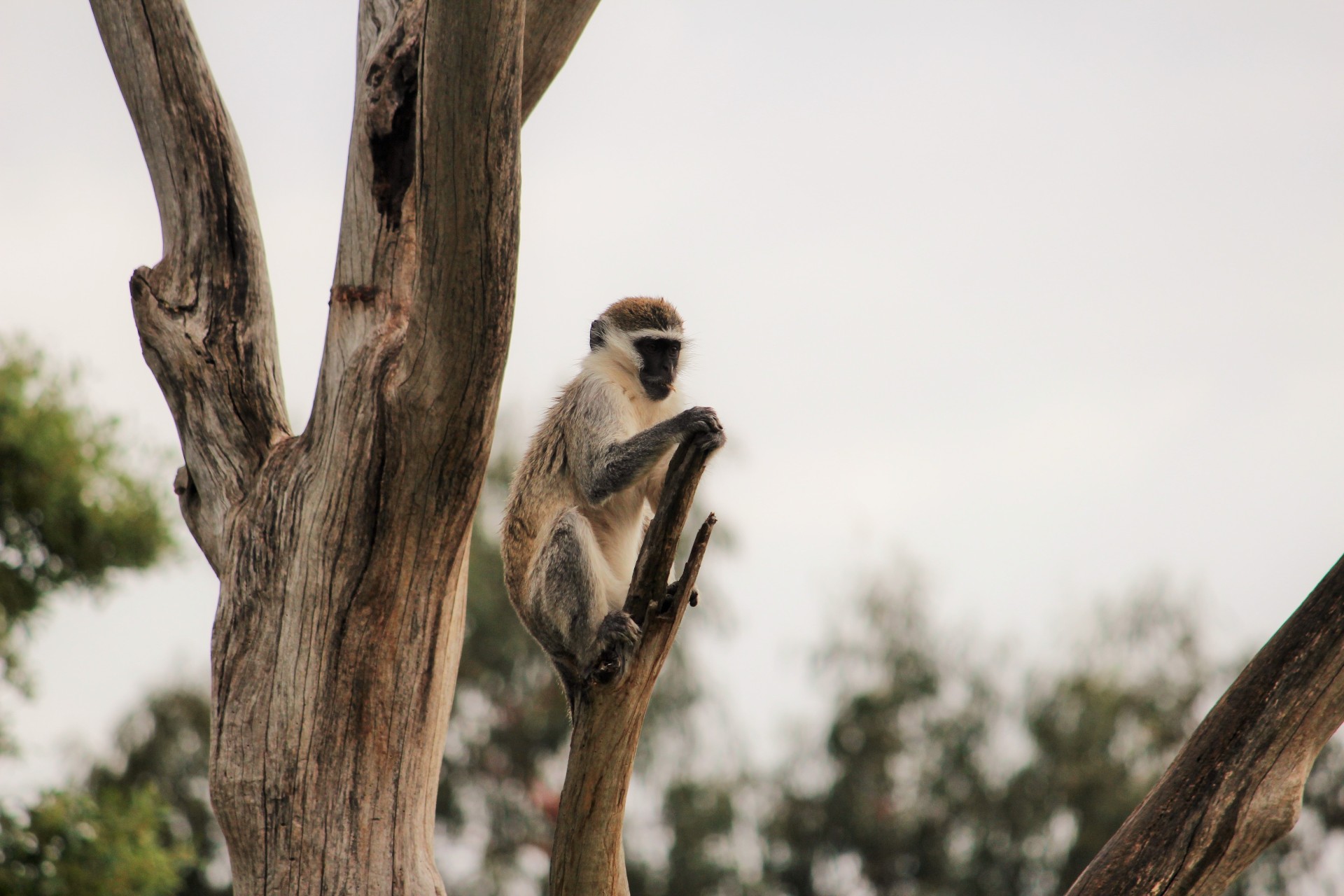
A vervet sitting high up in the branches of a tree © Catherine O’Sullivan, Unsplash
Vervets are equally comfortable on the ground as they are in trees. They are active in the daytime and sleep in trees at night.
Excellent communicators, vervets are thought to possess the basics of language, that is, vocal communication through an intricate system of alarm calls. These calls vary greatly depending on the different types of threats to the community. For example, there are distinct predator-specific calls to warn of invading leopards, snakes and eagles. These unique calls help vervets determine not only where the danger is, but also how to best escape. For example, if a leopard alarm call is raised, vervets may run into trees to escape this predator on land. If an eagle alarm call is raised, vervets may instead look up or run under a bush to avoid an aerial attack.
Vervets spend several hours a day grooming, removing parasites, dirt or other material from each other’s fur. Dominant individuals get the most grooming. A hierarchical system also controls feeding, mating, fighting, friendships and even survival. Young vervets chase one another, wrestle, tumble and take turns pushing each other off a high perches.
The society of vervet monkeys is built on complex but stable social groups known as troops, consisting of 10-50 individuals, with largely adult females and their immature offspring. Vervets are seasonal breeders, giving birth after the rainy season when food is at its most abundant. Mothers produce a single offspring after a gestation is five and a half months. Vervet mothers are extremely protective of their babies, although some will still leave their infants in the charge of an interested female.
Females remain in their birth groups throughout their entire life, but males will transfer troops at least once following puberty. Changing troops can be dangerous; the young males may encounter predators without the protection of their troop, and new troops may not accept them. There is a strict social hierarchy among troop members; a mother’s social standing predetermines that of her offspring’s, and even adults in a family must submit to juveniles of families with higher social status.
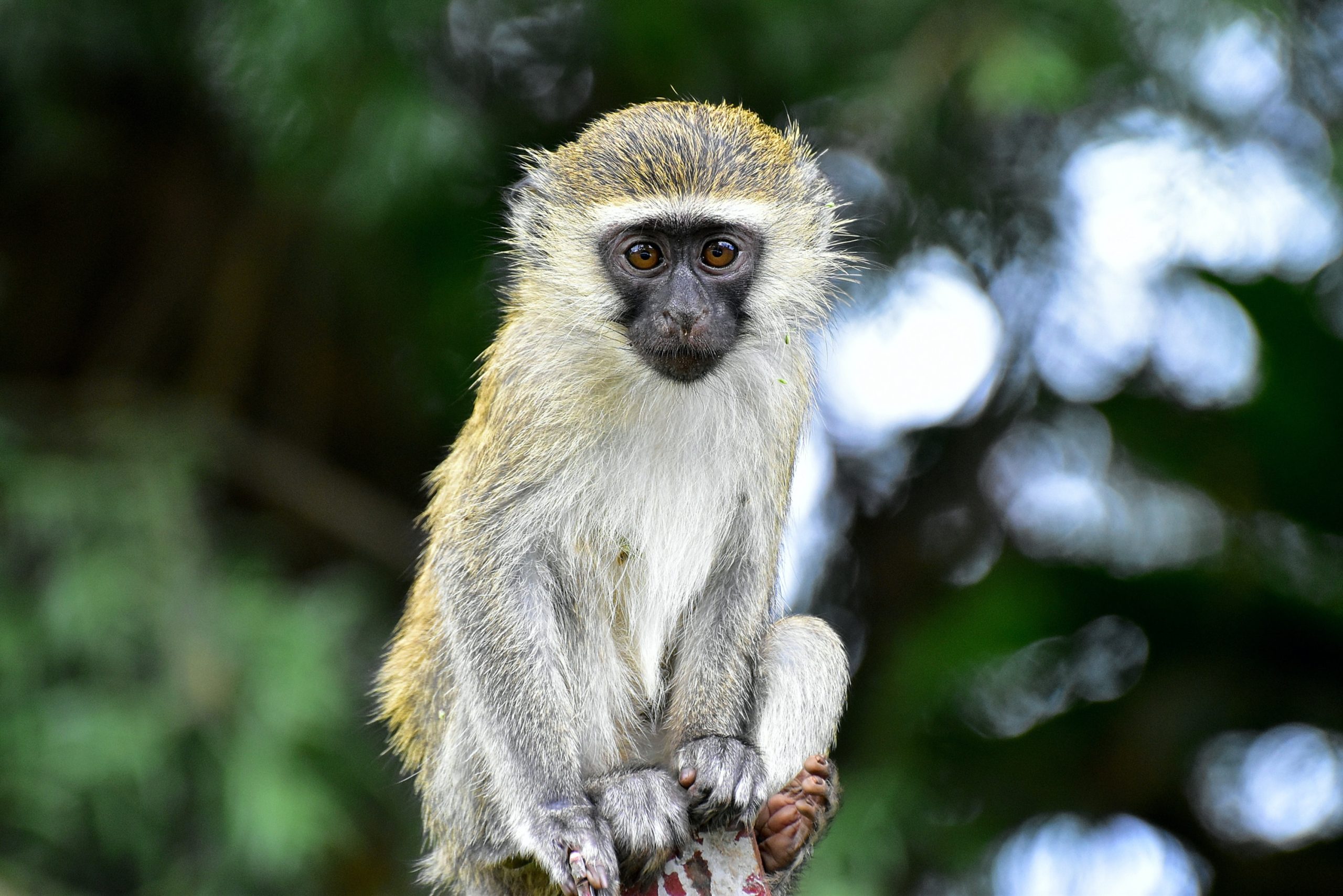
A wild vervet © Ivan Sabayuki, Unsplash
Vervets frequently come into conflict with humans. They are considered vermin due to crop raiding and as a result are often shot, poisoned, or trapped. While vervets do not attack people, they may bite or be aggressive in self-defence.
Vervets are also killed for bushmeat in some areas. For example, in Uganda, where vervets are considered problematic because of human-wildlife conflict, people are allowed to hunt them to reduce damages and losses to their crops.
Some people think that vervets can make good pets. Often, female vervets are slaughtered for the bushmeat trade and their orphaned infants are captured for the illegal exotic pet trade and kept in poor conditions. Captive vervets can suffer terribly due to inappropriate care.
